A new and captivating destination has emerged in Japan as Ibaraki, Fukushima, and Tochigi prefectures unite to present the Diamond Route. Located about 2.5 hours north of Tokyo, this route offers a unique blend of attractions, experiences, and culinary delights that diverge from the well-trodden paths of Kyoto and Osaka.
The Diamond Route is a treasure trove of wonders, featuring historic Samurai castles, magnificent golden shrines, and rejuvenating natural hot springs. These highlights promise an unforgettable journey into Japan’s rich heritage.
This northern region, known for its deep cultural roots and Samurai legacy, has traditionally been underexplored by both domestic and international tourists. A new initiative aims to change that.
The Route spans six key areas, categorized into four themes: history, outdoor adventures, health, and nature. Travelers can enjoy vibrant festivals, towering mountains, serene gardens, scenic boat rides, sacred temples, cascading waterfalls, engaging museums, dramatic canyons, peaceful lakes, charming villages, majestic castles, captivating aquariums, soothing hot springs, and lush flower parks.
Discover Nikko: Japan’s Hidden Gem
Tucked away in Tochigi Prefecture, Japan, Nikko is a hidden treasure renowned for its natural splendor and historical richness. This picturesque town and national park boast dramatic mountain scenery, tranquil lakes, stunning waterfalls, soothing hot springs, and lively wild monkeys. A variety of hiking trails cater to both nature enthusiasts and adventure seekers.
Waku Yukio, Associate Section Chief of Tochigi Prefecture’s Tourism Division, highlighted that Nikko perfectly blends Japanese culture with natural beauty. Just an hour and a half from Tokyo, Nikko is easily accessible and offers a serene escape with its national forests, waterfalls, lakes, hiking trails, significant World Heritage sites, and hot springs.
Nikko is particularly popular with international visitors during autumn, when its vibrant foliage is celebrated as some of the most beautiful in the world. Winter brings opportunities for skiing and other cold-weather activities, while spring showcases stunning cherry blossoms. In the summer, the warm weather is ideal for hiking, walking, and biking adventures.
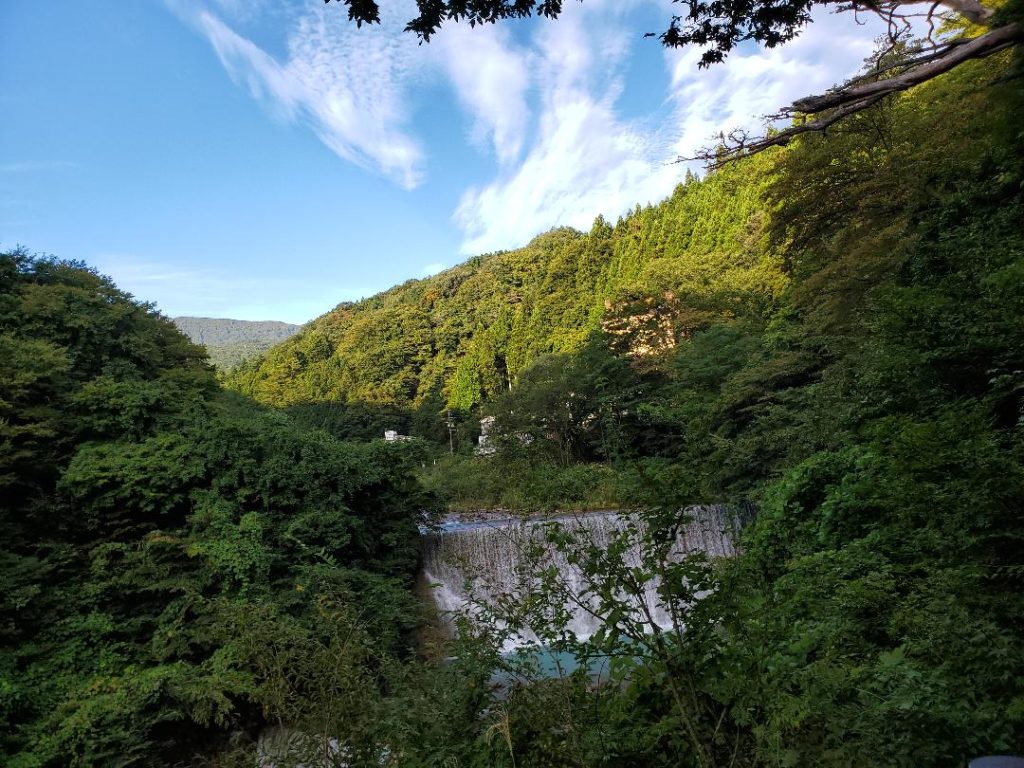
Tsuchiyu Onsen Sansuiso, New York Jewish Travel Guide
Just a two-hour train ride from Tokyo, Toshogu Shrine is a UNESCO World Heritage Site and Japan’s most opulent shrine. It encompasses 55 intricately crafted Buddhist temples and Shinto shrines, serving as the final resting place of Tokugawa Ieyasu, the founder of the Tokugawa Shogunate, which ruled Japan for over 250 years until 1868.
What makes Toshogu Shrine truly unique is its grandiose decoration, featuring elaborate wood carvings and lavish use of gold leaf—an extraordinary departure from the simplicity typical of Japanese shrine architecture. Visitors are captivated by the striking five-story pagoda, the famed “see no evil, speak no evil, hear no evil” monkeys, and the spectacular Yomeimon Gate, regarded as one of Japan’s most elaborate and beautiful structures.
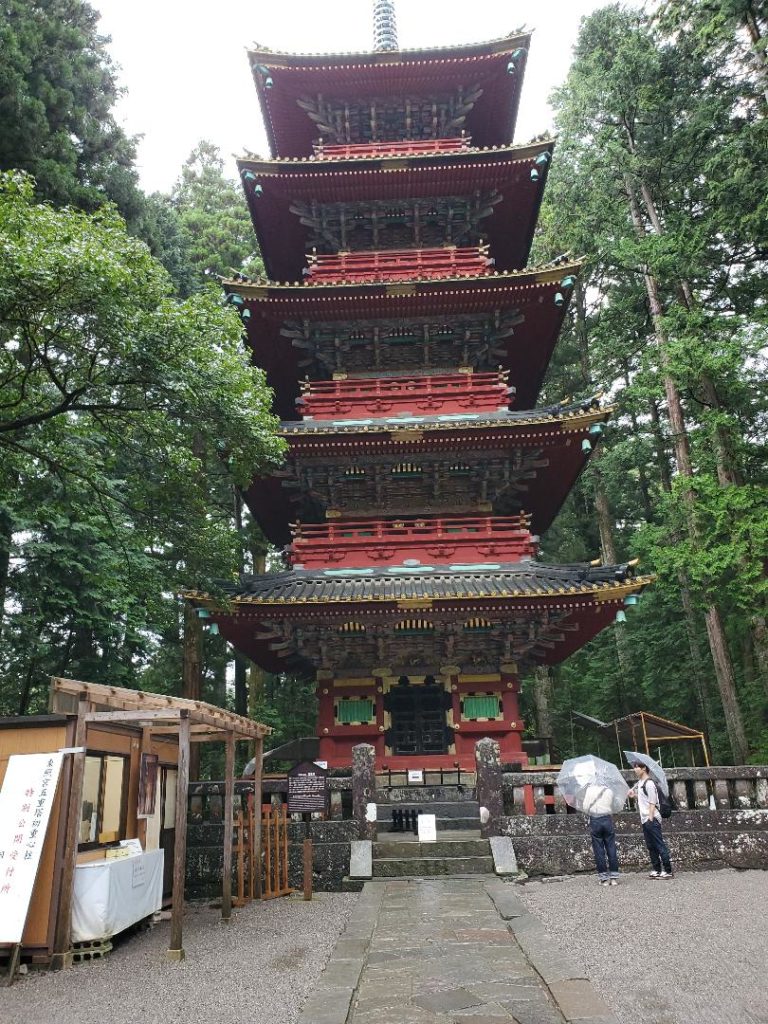
Toshogu Shrine: A New York Jewish Travel Guide
Kanaya Hotel History House: A Glimpse into Nikko’s Rich Past
One of the premier accommodations in Nikko is the Kanaya Hotel History House, a distinguished establishment recognized as a nationally designated cultural property. This unique hotel is renowned for its dual historic significance: it features a 400-year-old Samurai residence and is one of Japan’s earliest lodgings, which once served as a summer retreat for foreign diplomats and businesspeople. Today, it stands as Japan’s oldest Western-style hotel, offering a captivating window into both its storied past and present.
The hotel, a two-story wooden building—a rarity for its era—welcomes visitors with its traditional tatami rooms, elegant stairways, and charming corridors, all set around a picturesque garden. Japanese architectural elements are seamlessly integrated, including vibrant wood carvings on the doors and vermilion handrails overlooking the lobby, reminiscent of Shinto shrine aesthetics.
During our visit, guide Ms. Makiko Yamada shared intriguing insights about the hotel’s surroundings. She highlighted that the wall behind the counter is crafted from Oya stone, a local igneous rock formed from lava and ash, which became popular during Japan’s Meiji period. Adorning this wall are portraits of notable past visitors, including James Curtis Hepburn, Albert Einstein, and Isabella Bird—a 19th-century British travel writer who played a significant role in introducing Nikko to the Western world.
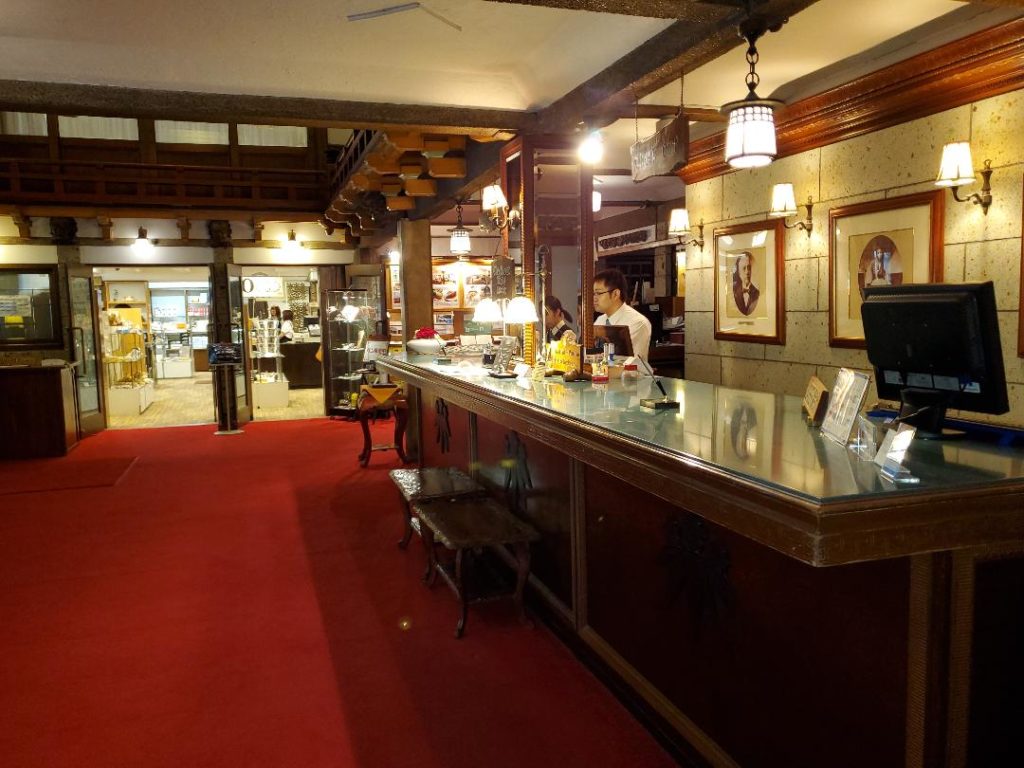
Kanaya Hotel History House: A New York Jewish Travel Guide
Shinkyo Bridge and Kegon Falls: Nikko’s Natural Wonders
On our journey to Kegon Falls, we crossed the renowned Shinkyo Bridge, one of Japan’s top three bridges and an integral part of the World Heritage Futarasan-jinja Shrine. Ms. Sato highlighted that late October to early November is the prime time to witness the bridge amidst vibrant autumn colors. This picturesque scene features the river’s deep blue, the bridge’s striking vermilion, and the surrounding golden foliage, creating a breathtaking tableau. Additionally, the area is illuminated at night during a special three-day period in this season.
Kegon Falls, one of Nikko’s most celebrated waterfalls, features a dramatic seven-meter-wide cascade that plunges an impressive 97 meters into the basin below. Twelve smaller falls converge with the main waterfall, enhancing the spectacle. Regarded as one of Japan’s three most beautiful waterfalls, Kegon Falls is particularly stunning during autumn when the trees around it burst into brilliant colors. In winter, the falls transform into a stunning wall of frozen blue ice, offering a different yet equally captivating beauty. Each season unveils its own unique charm.
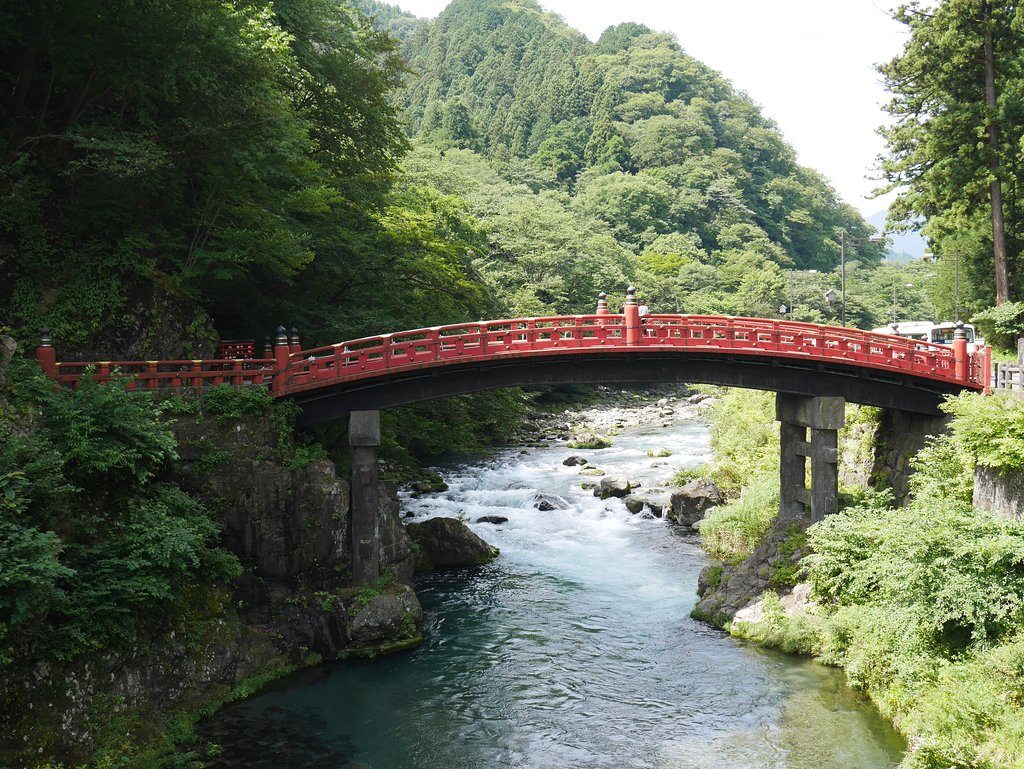
Skinkyo Bridge: A New York Jewish Travel Guide
Exploring Fukushima: A Land of Natural Beauty and Fruitful Delights
Fukushima is renowned for its stunning natural landscapes, including crystal-clear lakes, snow-capped mountains, exceptional sake craftsmanship, and its warm-hearted residents. Our journey began in Fukushima City with a delightful fruit-picking experience at Marusei, a charming farmhouse nestled in a lush forest garden. Known as one of Japan’s leading fruit-producing regions, Fukushima City proudly holds the title of the “Fruit Kingdom,” and there’s even a local road affectionately dubbed the “Fruit Line.”
The city is a veritable haven for fruit enthusiasts, offering a rich bounty that makes it a prime destination for the Japanese pastime of “fruits-kari” or “fruit hunting.”
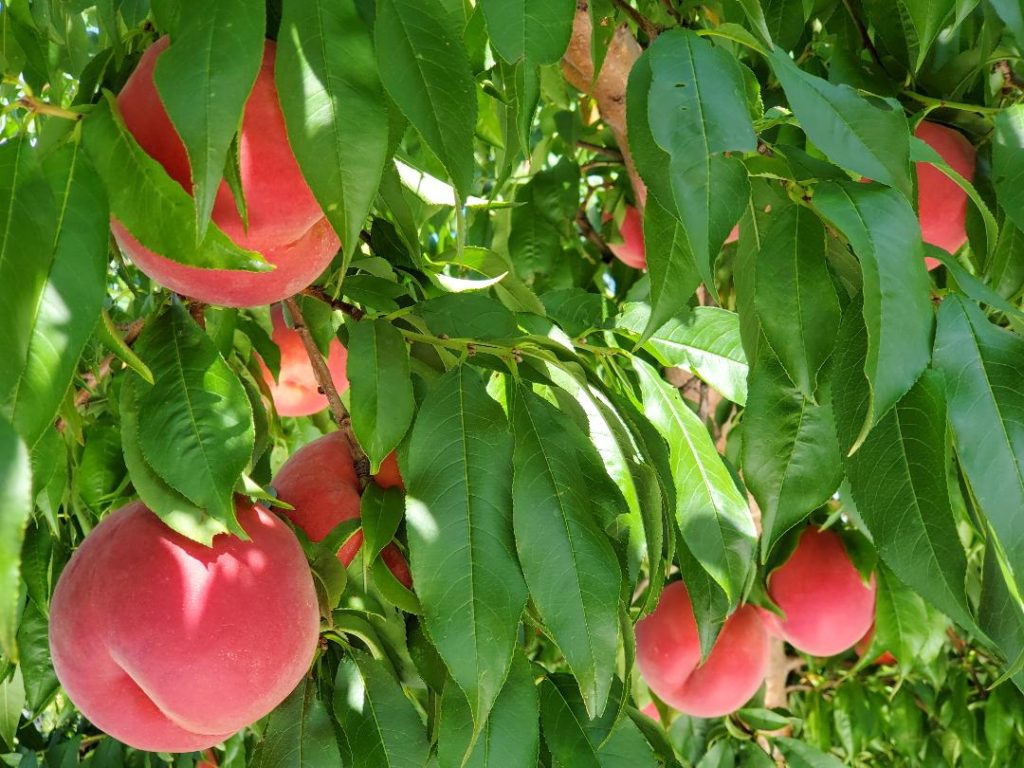
Fukushima City for fruit hunting at Marusei, a Farmhouse Forest Garden—New York Jewish Travel Guide
For those fascinated by Japanese martial arts and culture, “Kendo” provides an enriching experience. Participants delve into the history of Kendo, gain insight into the instructor’s philosophy, and learn fundamental techniques for striking and blocking. The session culminates in a friendly match. Kendo focuses on principles such as respect for others and the cultivation of one’s inner integrity, prioritizing personal growth over mere victory.
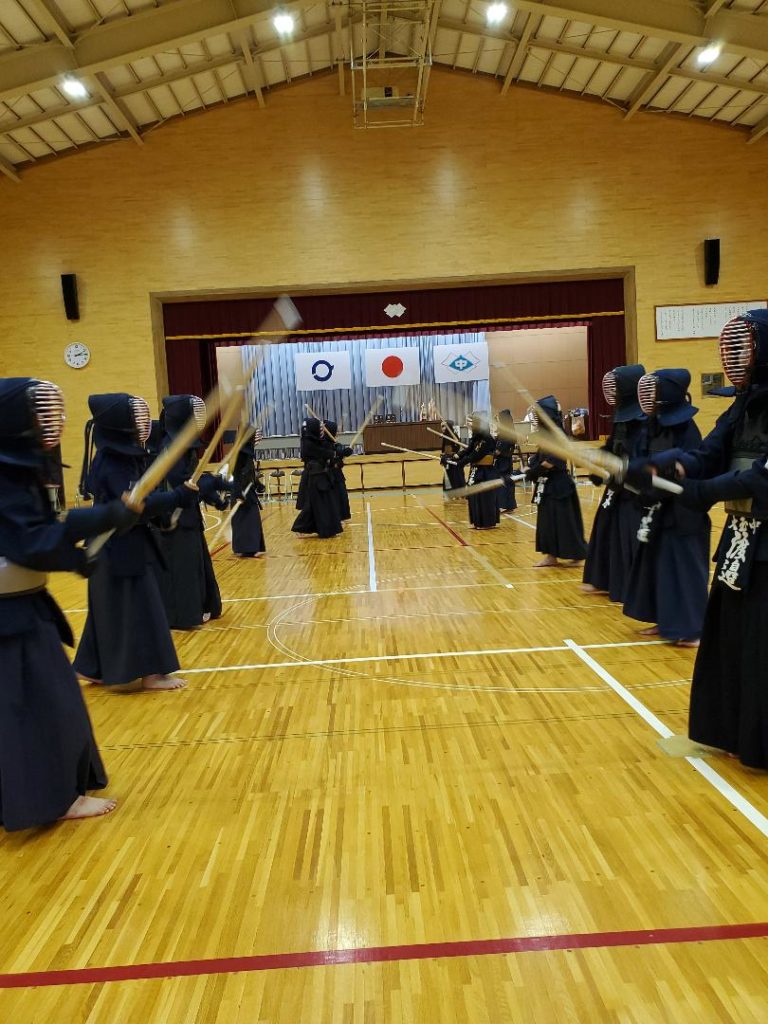
Nihonmatsu Kendo School: New York Jewish Travel Guide
Nihonmatsu Castle: A Historic Gem with Scenic Splendor
Nihonmatsu Castle, with its tranquil gardens and scenic trails, is composed of two distinct castles. The newer castle, built in the mid-1600s, stands atop the ruins of an older structure. While the castle has been meticulously restored, the original castle walls have withstood the test of time, preserving their historic integrity. A climb to the top of the castle ruins offers visitors a stunning panoramic view of the surrounding countryside, with Mount Adatara providing a dramatic backdrop.
Tomoki Fujii, a senior staff member at Fukushima Prefecture’s Tourism Promotion, recommends visiting Nihonmatsu Castle during two particularly spectacular seasons: spring, when the grounds are transformed by the blooming of 1,700 cherry trees, and fall, when the landscape is painted in vibrant hues of red, orange, and yellow.
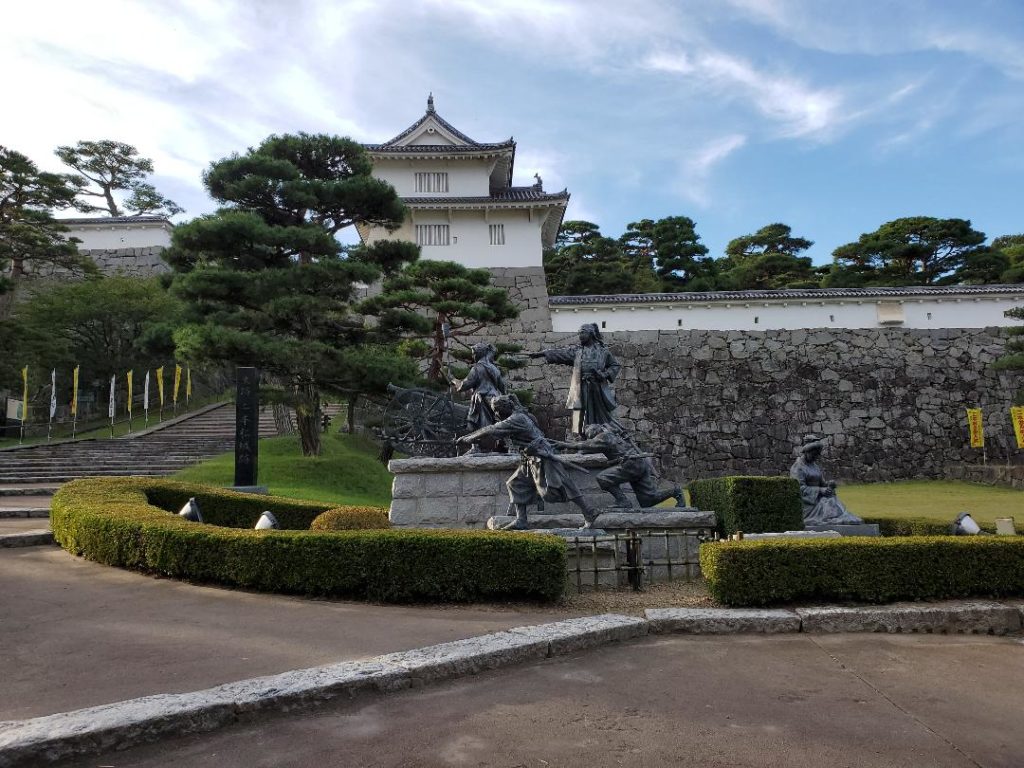
Nihonmatsu Castle: New York Jewish Travel Guide
Tsuchiyu Onsen: Experience Crafting Traditional Kokeshi Dolls
Tsuchiyu Onsen, located in Fukushima City, is renowned for its craftsmanship of Kokeshi dolls. Visitors can immerse themselves in this tradition through workshops where they can paint their own Tsuchiyu Kokeshi dolls. These handcrafted dolls are celebrated for their smaller heads, elongated bodies, distinctive facial expressions, and the unique creaking sound they make when their necks are turned. Participating in this cultural activity offers a hands-on way to connect with local artistry and heritage.
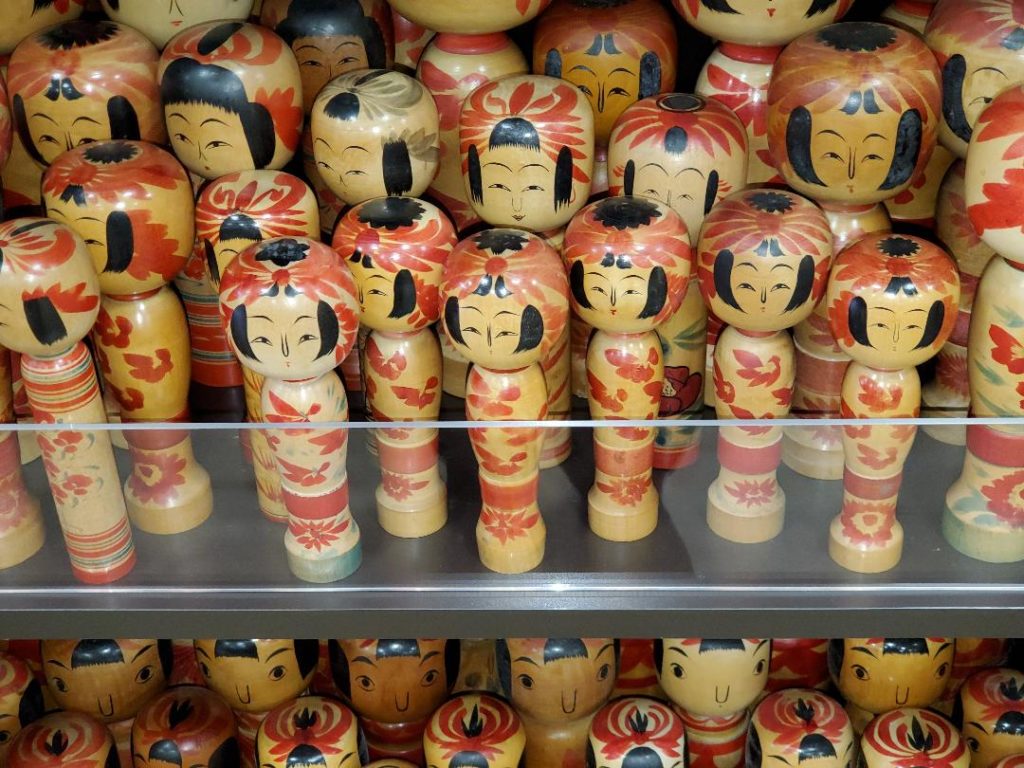
Tsuchiyu Kokeshi Dolls: A New York Jewish Travel Guide
Goshikinuma: The Five Colored Lakes of Bandai-Asahi National Park
Goshikinuma, or the Five Colored Lakes, is a hidden treasure nestled within Bandai-Asahi National Park at the base of Mount Bandai. This lesser-known hiking trail spans approximately two miles, offering a truly breathtaking experience. Though some international visitors make their way here, with a bit of planning and guidance, you can fully appreciate the area’s stunning natural beauty during a leisurely one-hour hike.
Among the lakes, Aonuma is particularly notable for its strikingly vivid colors, which appear almost otherworldly. The lake’s most captivating hue is a deep cobalt blue, beautifully contrasted against lush wetlands and scenic mountains.
Genta Kanemitsu, a seasoned guide with 13 years of experience and owner of the charming Bandai Lakeside Guesthouse (www.bandai.ski), revealed that Goshikinuma attracts around 500,000 visitors annually, with roughly 10 percent being international tourists and 40 percent Japanese travelers.
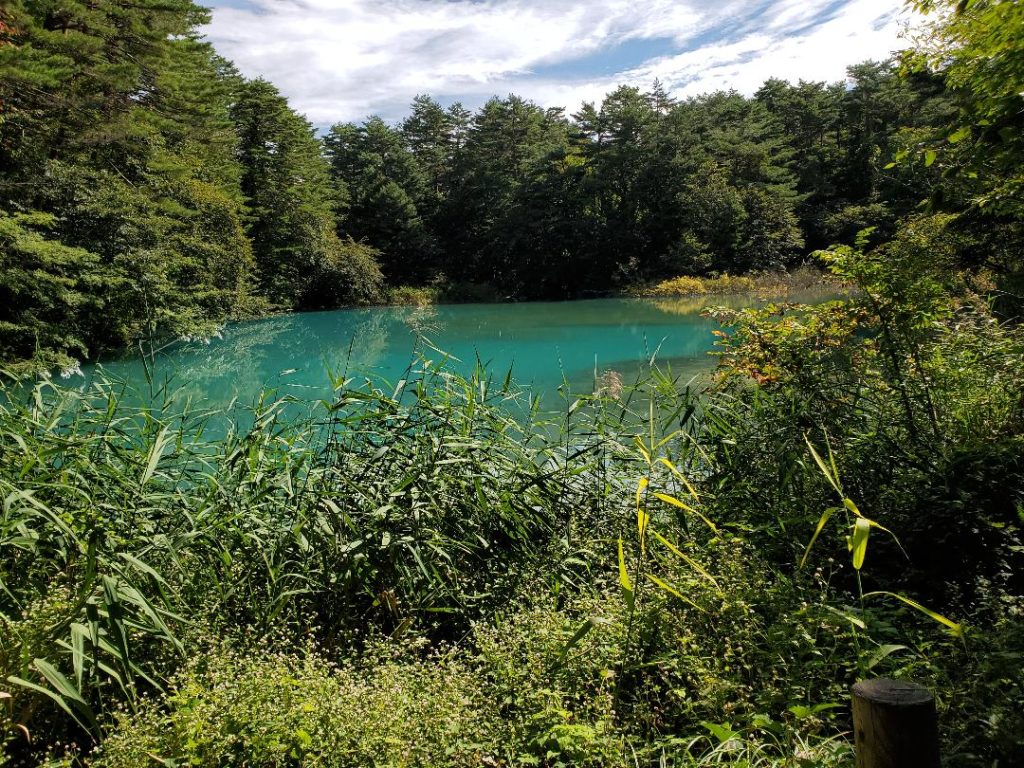
Goshikinuma- Five Colored Lakes: New York Jewish Travel Guide
Ouchi-Juku: A Journey Back to Edo Period Japan
Ouchi-Juku, located in Minami Aizu-gun, Fukushima Prefecture, is a historic post station of significant cultural importance. The entire town is designated as a preservation district for its historical buildings, with each charming thatched house now serving as a souvenir shop, restaurant, or accommodation. Unique local souvenirs include sake, cotton, folk art, and pottery.
Pawel Sewera, Sales Manager of JTB USA, highlighted that each thatched house is equipped with advanced sprinkler systems for safety. As you explore Ouchi-Juku, you’ll be transported back to the Edo Period (1603–1868), the era when these remarkable structures were built.
Ouchi-Juku is particularly famous for its handmade soba noodles, which are served with a leek as your cutlery instead of traditional chopsticks. The town is enchanting year-round, with each season offering its own distinct charm—whether it’s the serene winter landscape, the cherry blossoms in spring, or the refreshing summer views. For a memorable experience, don’t miss hiking up the hill for a panoramic view of this picturesque destination.
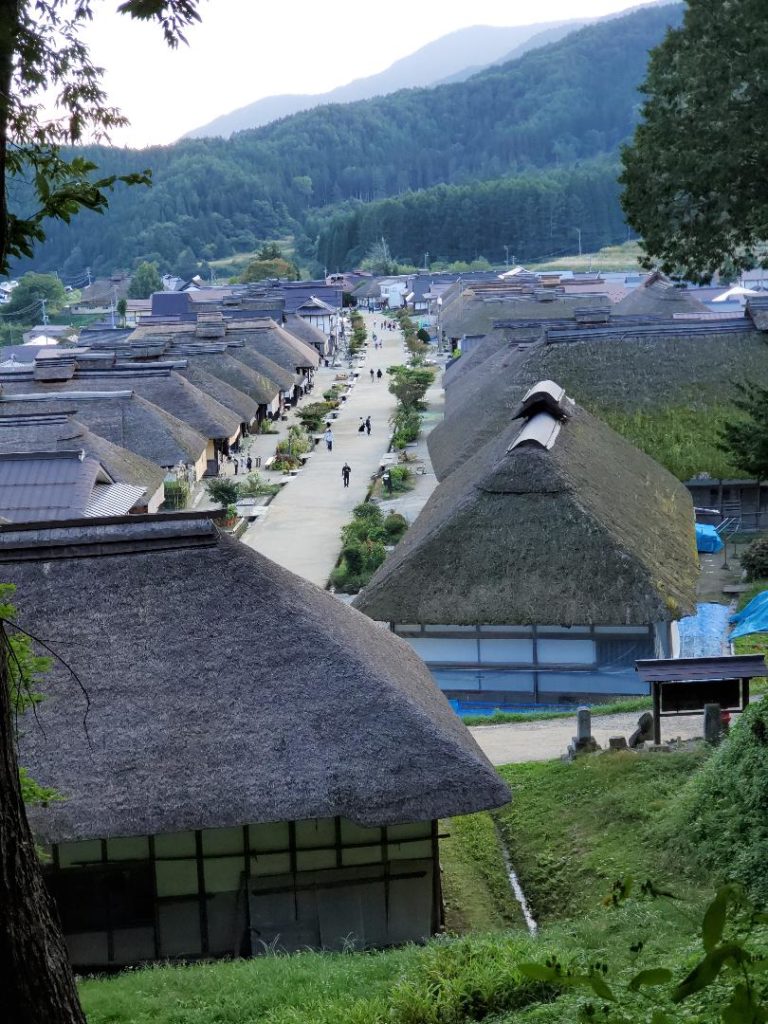
Ouchi-Juku: A New York Jewish Travel Guide
Samurai School Nisshinkan: Explore the Legacy of Samurai Training
The Samurai School Nisshinkan, originally established as a training academy for aspiring Samurai, provides an in-depth look into the educational practices that shaped these elite warriors. The school offers a range of interactive experiences designed to immerse visitors in traditional Samurai culture.
At Nisshinkan, participants can:
- Practice Archery: Experience the precision and discipline of Samurai archery, a key skill in their training regimen.
- Engage in Seated Meditation: Discover the art of Zen meditation, which was integral to Samurai training for cultivating focus and mental clarity.
- Participate in Tea Ceremonies: Learn the refined rituals of the Japanese tea ceremony, reflecting the Samurai’s appreciation for discipline and aesthetics.
Through these activities, visitors gain a deeper understanding of the values and techniques that were essential to Samurai life. The school’s historical setting and educational programs offer a rich, hands-on exploration of Samurai traditions and heritage.
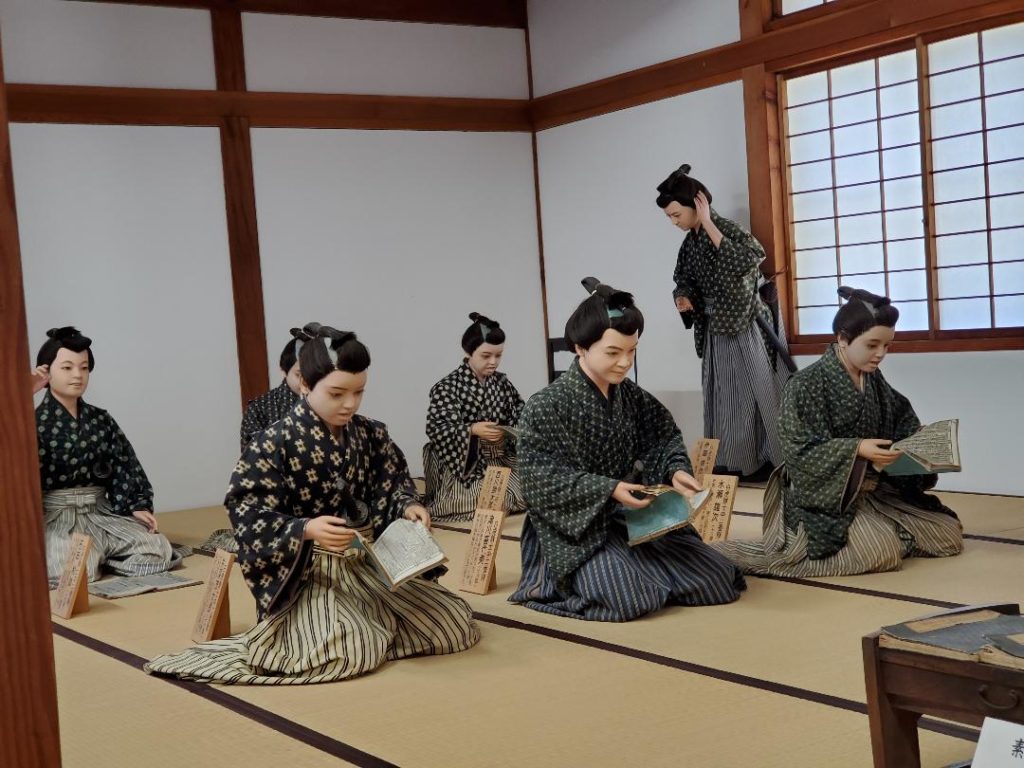
Samurai School Nisshinkan: New York Jewish Travel Guide
Tsurugajo Castle: A Historical Jewel with Scenic Views
Tsurugajo Castle is a must-visit for history enthusiasts, once serving as a strategic stronghold for local warlords. The castle’s five-story Tenshu was reconstructed in the 1960s and fully restored in 2011, including the reinstallation of the original red roof tiles. Visitors can ascend to the top for sweeping panoramic views of the city.
Troy Mishogi, a part-time professor at the University of Aizu Junior College, noted that the castle attracts over 600,000 visitors annually, with 40 percent coming from abroad and 60 percent from Japan. Inside, an engaging museum offers insights into the castle’s history and samurai life. The Tsurugajo Cherry Blossom Festival, held from April to May, features vibrant drum performances and stunning illuminated night views, adding to the castle’s charm.
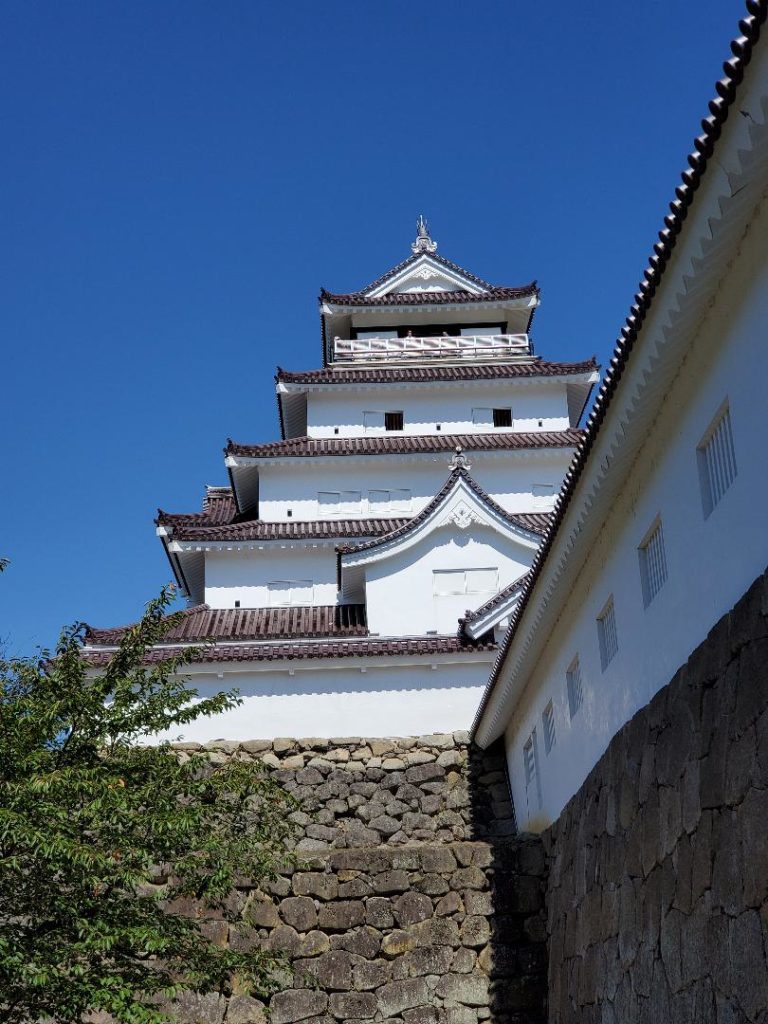
The Tsurugajo Castle: New York Jewish Travel Guide
Suehiro Sake Brewery: A Journey into Japan’s Sake Tradition
No visit to Japan is complete without a tour of a sake brewery, and Aizu’s Suehiro Sake Brewery is a standout destination. As one of the largest and most esteemed sake producers in the Tohoku Region, Suehiro has been crafting its renowned sake since its founding in 1850. This family-owned brewery, which has been a pillar of tradition through eight generations, is celebrated both nationally and internationally for its premium offerings.
Suehiro is particularly noted for its sake made using the traditional “Yamahai” method. This time-honored technique involves a slow, open fermentation process that imparts a rich and complex flavor to the sake. The brewery’s reputation has been further bolstered by appearances in movies and TV dramas.
Visitors to Suehiro Brewery can take part in guided tours offered every 30 minutes, providing an in-depth look at the brewing process and the brewery’s storied history. A small museum on-site explores both the brewery’s legacy and the broader history of sake production. The factory store features a tasting bar where guests can sample nearly the entire range of Suehiro’s sake.
Enhancing the experience, the brewery also hosts a cozy concert hall that occasionally features diverse performances, including jazz by Japanese and international artists, adding a cultural dimension to the visit.
For more information, visit:
Story by Meyer Harroch, New York Jewish Travel Guide, and New York Jewish Guide.
The author took part in a press trip sponsored by the Fukushima, Tochigi, and Ibaraki Prefectures and the Japan Travel Bureau (JTB).



You must be logged in to post a comment Login